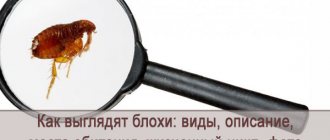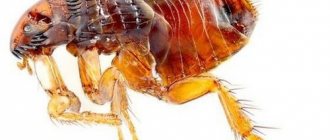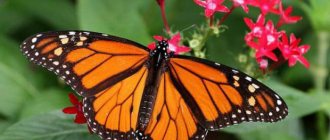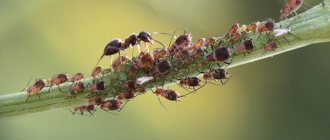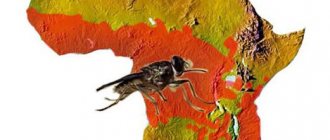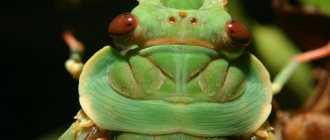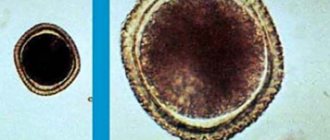A fly is a type of insect that is distributed throughout the world. In total there are more than 3650 species. The fly insect belongs to the order Diptera. The fly is a limitless center of various bacterial infections, parasitic nematodes and protozoa. They are carriers of both harmful and non-harmful bacteria for the human body.
Family: Flies
Class: Insects
Order: Diptera
Type: Arthropods
Kingdom: Animals
Domain: Eukaryotes
| Parameter name | Meaning |
| Fly size | From 0.4 cm to 6 cm. |
| What does a fly eat? | Depending on the type of flies, their diet also changes. There is a species of fly that does not feed at all as an adult. There are flies that feed on plant sap, other flies that feed on feces and waste, and some types of flies that suck the blood of people and animals. There are also species of flies that prefer animal corpses. |
| Where do flies live? | Distributed throughout the world. They are found in forests, near water areas, people's houses, and meadows. The existence of some species of these insects is closely related to humans. Houseflies cannot be found in a forest environment, since their development from a larva into a fly occurs precisely in the territory of human activity. |
Description
The body varies in length. Often the length reaches 2 cm. There is a proboscis on the head. Its purpose is to absorb and absorb liquid.
The entire body of the fly will have only three parts. This is her head, her body and abdomen. The legs are three pairs. It is interesting that each such tiny leg, in turn, is also divided into 5 parts.
One of the 5 particles will be a foot and it, in turn, has two sharp claws. It is equipped with sticky pads.
And only these features will allow the front sight to move along the ceiling and any other vertical surfaces.
Bee
This is one of those insects that bring invaluable benefits to humans. They are loved by many... And internationally recognized as the most hardworking insects.
The bee's body is painted in black and yellow stripes, there are wings and a proboscis, with which they collect nectar (and, with the help of special saliva, turn it into honey). Every bee has a stinger, which is located in the back of the body; it serves for protection. When a bee thrusts its sting into an enemy, the sting remains in the victim, and the bee dies.
Interesting facts about bees
- A bee can sense a flower with nectar within one kilometer.
- The world's first beekeepers were the Egyptians.
- The most dangerous species of bees lives in Australia.
- Bees have a very highly developed sense of smell. They distinguish and perceive odors 1000 times stronger than humans. They are able to smell the scent of flowers at a distance of 1 kilometer.
- In order to collect just 1 kilogram of honey, a bee needs to visit 10 million flowers, make 150,000 flights and fly 300,000 kilometers.
- In one day, one bee can collect pollen from 7,000 flowers. To get just 100 grams of honey, a bee must fly a distance of 46,000 kilometers. This is the same distance as around the Earth at the equator.
- A bee swarm can weigh up to 7-8 kg, it consists of 50-60 thousand bees, having 2-3 kg of honey in their crops. During inclement weather, bees can feed on honey reserves for 8 days.
- A honey bee flaps its wings 200 times per second. She needs to make 11,400 strokes per minute to get the characteristic buzzing sound.
- A bee has 5 eyes. Three at the top of the head and two at the front.
- Bees have many enemies and “freeloaders”, so the entrance to the hive is reliably guarded by guards who are ready to attack an uninvited guest at any moment. No bee can enter someone else's hive. Each hive has a special smell that is not detectable by humans. Each bee stores this scent in a special cavity in its body. Flying up to the entrance, the bee opens it and presents the smell to the guards as its business card or pass.
Eyes
The eyes of this insect can safely be called unique - this is a special organ for such a small insect. They are endowed with several thousand facets, which makes a circular field of vision possible.
So the eyes of this fly can see everything without any problems. This applies not only to what happens to the side, but also to the rear.
№12
They need a small area. You think about these insects flying all over your house, accompanying you outside, etc. In fact, studies have shown that they do not need much space. On top of everything else, they fly very slowly, naturally, if you don’t chase them with a sneaker. The average speed of a fly is 7 km/h, which is slightly more than the speed of a person.
Usually she covers a distance of no more than 1000 meters per day. On average, a person covers 3-4 km per day.
Carrion
This beauty also has two names. The second one will be a green fly. This insect has a body that shines with emerald. They live near sewage and carrion.
To prevent the female from eating the male's fly after mating, he presents her with some food.
What kind of insect is this?
Flies are insects belonging to the order Diptera. What an insect looks like largely depends on what species it belongs to. For example, body sizes vary from 3–5 mm to 5–6 cm, and the color can be gray, black, green, or red.
But all flies have common features. This is a dense body, covered with densely growing hairs, transparent wings, large, complex eyes, short antennae, and a proboscis. Some representatives of the species are synanthropic insects, but most flies live in the wild.
Far from being a charming creature
Ilnitsa bee-eater
This is not a separate species, but just a subspecies of hoverflies. With a lot of names. This is both tenacious and just ordinary. The insect will be large and the length can often be up to about 1.5 cm.
The body is predominantly dark in color. The body is also characterized by the fact that it is covered with pubescence.
The larvae themselves, if they enter the human body, often cause serious intestinal disorders.
Order Diptera (Diptera)
Mosquitoes. Butterflies. flies
rice. 1. Scheme of the structure of the oral apparatus of the piercing-sucking Culex mosquito: 1 - mandibular palps, 2 - upper lip, 3 - upper jaw, 4 - lower jaw, 5 - hypopharynx, 6 - lower lip.
They have one pair of wings, the second pair is transformed into halteres (presumably an organ of balance). Head with large compound eyes on the sides. Mouthparts of the piercing-sucking or licking type. The chest segments are fused together. Adults can only absorb food in liquid form; among dipterans there are many blood-sucking species, and there are species that feed on nectar. Development with complete transformation. The larvae are worm-shaped, without legs; flies have no heads. The larvae develop in water, rotting substrates, animal and plant tissues, and soil.
The order Diptera is divided into suborders: Long-whiskered (Nematocera), Short-whiskered straight-stitched (Brachycera-Orthorrhapha), Short-whiskered round-stitched (Brachycera-Cyclorrhapha).
Representatives of the suborder Longwhiskers have long multi-segmented antennae, a larva with a head capsule and a covered pupa. Covered pupae are those in which the rudiments grow tightly to the body. The suborder Longwhiskers is divided into families: True mosquitoes (Culicidae), Butterflies (Psychodidae), etc.
rice. 2. Distinctive features of the malarial and common mosquitoes: 1 - “floats”, 2 - respiratory openings, 3 - palm-shaped hairs, 4 - respiratory siphon of the larva, 5 - respiratory siphon of the pupae, 6 - abdomen, 7 - mandibular palps.
True mosquitoes (Culicidae) usually hide in vegetation and indoors during the day, and at night they attack vertebrates, in particular humans, on whose blood they feed. Only female mosquitoes suck blood. In our region, the common mosquito of the genus Culex and the malaria mosquito of the genus Anopheles are often found. These mosquitoes lay their eggs in water. Larvae and pupae also develop in water. The Anopheles mosquito is called an anopheles mosquito because it transmits Plasmodium parasites. Differences between the malaria mosquito and the common mosquito are present at all stages of the life cycle (Fig. 2, 3).
The female malaria mosquito lays eggs singly, without sticking them to each other. The eggs have air “floats” and float on the surface of the water. The eggs of the malaria mosquito hatch into larvae that do not have a respiratory siphon; therefore, to breathe, the larva lies parallel to the surface of the water, pressing the respiratory openings against it.
The larvae of mosquitoes of the genus Culex have a respiratory siphon at the end of the abdomen, so they are positioned at an angle to the surface of the water to breathe.
Mosquito pupae also breathe atmospheric air; respiratory siphons are located on the cephalothorax. The respiratory siphon of the malaria mosquito pupa has the shape of a funnel, while the siphon of the common mosquito pupa has the shape of a tube.
rice. 3. Heads of malarial and common mosquitoes: A - female Culex, B - female Anopheles, C - male Culex, D - male Anopheles: 1 - proboscis, 2 - antennae, 3 - palps.
When landing, the abdomen of a malaria mosquito is at an angle to the surface, while that of an ordinary mosquito is parallel to the surface. The palps of the female malaria mosquito are equal in length to the proboscis. The palps of the female Culex mosquito are several times shorter than the proboscis. The palps of the male analaria mosquito are equal in length to the proboscis and have club-shaped thickenings. The palps of the male Culex mosquito are also equal in length to the proboscis, but do not have club-shaped thickenings.
Mosquitoes of the genus Culex can carry pathogens of Japanese encephalitis and yellow fever.
Butterflies (Psychodidae) are small dipterans with fluffy wings that have dense veining. This family includes mosquitoes of the genus Phlebotomus, which carry the pathogens of papatachi fever, cutaneous leishmaniasis, and visceral leishmaniasis (Fig. 4).
rice. 4. Mosquito (Phlebotomus sp.)
rice. 5. Tsetse fly (Glossina palpalis)
Representatives of the suborder Short-segmented round-stitched have very short three-segmented antennae with setae on the third segment. In larvae, the head capsule is reduced and only oral stylets are present. The pupa is free, located in the puparia - a shell made of unshed larval skin. When the fly emerges, the puparia opens along a rounded line, hence the name of the suborder. The suborder Short-whiskered round-stitched flies is divided into families: True flies (Muscidae), Gray blowflies (Sarcophagidae), Subcutaneous flies (Hypodermatidae), Stomach flies (Gastrophilidae), etc.
Among the representatives of the family True flies (Muscidae) there are many synanthropic species. The housefly (Musca domestica) is often found in cities. Its larvae develop in sewage, manure, garbage and garbage pits. Housefly larvae have extraintestinal digestion. Adults pose a danger to humans because they are mechanical carriers of bacterial spores, helminth eggs, and protozoan cysts (Fig. 6, 7).
rice. 6. Housefly: A - eggs, B, C - larvae of different ages, D - puparium, E - pupa extracted from the puparium, E - imago.
Blood-sucking representatives of this family include the tsetse fly (Glossina palpalis), which carries trypanosomes, the causative agents of human sleeping sickness in Africa (Fig. 5).
The Wohlfart fly (Wohlfahrtia magnifica) belongs to the Gray blowfly family. Found in the southern regions of Russia. Adults feed on nectar and plant sap. Females are viviparous. Up to 100 larvae are deposited simultaneously on the skin and mucous membranes of animals. There are known cases of larvae being deposited in the ears, wounds, nose, and eyes of a sleeping person. The larvae penetrate deep into tissues, destroying them mechanically and with enzymes. Tissue myiasis develops. The larvae can eat away soft tissue to the bone. 3–5 days after infection, the larvae fall out and pupate in the soil.
rice. 7. Structure of the licking oral apparatus of a housefly: 1 - compound eye, 2 - vibrissae, 3 - base of the proboscis, 4 - lower lip, 5 - labial lobe, 6 - oral opening, 7 - upper lip, 8 - mandibular palps, 9 - antennae.
Gadflies cause great harm to livestock farming. Adult gadflies have an undeveloped mouthparts and do not feed.
Subcutaneous gadflies are dipterans whose larvae develop under the skin of animals. Females (Fig. lay eggs on the fur of animals, the hatched larvae penetrate into the skin, where they develop. Before pupation, they emerge through the fistulas, fall into the soil, where they pupate.
Females (Fig. lay eggs on the fur of animals, the hatched larvae penetrate into the skin, where they develop. Before pupation, they emerge through the fistulas, fall into the soil, where they pupate.
rice. 8. Bovine gadfly (Hypoderma bovis)
Gastric botflies are dipterans whose larvae develop in the gastrointestinal tract of animals. The female gadfly lays eggs on such areas of the skin that the animal can reach with its lips. Eggs or larvae are swallowed by the animal and enter the stomach; here the botfly larvae lead a parasitic lifestyle, feeding on blood and mucus. After development is completed, the larvae pass through the intestines and are released into the environment along with feces. They pupate in the soil.
► Insects with complete metamorphosis (Holometabola) also include the following orders:
- Order Reticulates (Neuroptera)
- Order Coleoptera, or Beetles (Coleoptera)
- Order Hymenoptera (Hymenoptera)
- Order Fleas (Siphonaptera, or Aphaniptera)
- Order Lepidoptera, or Butterflies (Lepidoptera)
- Brief description of the class Insects
- Classification of the class Insects
► Go to the table of contents of the book “Zoology of Invertebrates. Theory. Tasks. Answers"
Tsetse fly
He is a resident of the African continent. The food for this dangerous predator is blood from wild mammals. Flies will only be carriers of the terrifying tryponosomas.
The disease that this tryponosome causes is one of the most dangerous and incurable. They lead to death due to the destruction of the nervous and immune systems.
№4
It is incredibly difficult to fight them due to their insane reproduction rate. In just one month, a female can lay up to 2000 eggs. Once the larvae hatch, they only need 10 days to become full-fledged flies.
By the way, the warmer it is, the faster they reproduce. Typically, one city trash can is enough to produce up to 1,000 new insects.
Nutrition
What do flies do and what can they eat? Very interesting, but they can be omnivores. That is why they have a high ability to feed on organic food.
If suddenly the food turns out to be too hard for them, they can soak it first. Particular preference will be given to liquid juice and liquid sweets.
Reproduction
There are a couple of species that will reproduce with viviparous fruits. But most of it belongs to what the larvae will lay. Fly eggs can be laid 2-3 days after mating.
And one clutch can count about 150 testicles. Over a lifetime, this number for one fly can be up to 3 thousand units.
Maggots will appear in a day, then, after a week, an increase of 800 times occurs. And a new life is ready.
Flies are dangerous because they themselves are carriers of dangerous diseases.
Habitat
The fly, whose lifestyle we are considering in our article, belongs to the synanthropic species. This means that its existence is closely connected with man. Flies are especially interested in sewage - garbage cans, containers, rotting products, feces. It is these places that are most suitable for laying eggs, as they are rich in nutrients.
For humans, this insect poses a serious danger. The fact is that on the pads of her feet she carries the causative agents of many diseases - dysentery, cholera, typhoid fever. The difficulty also lies in the fact that harmful microorganisms are not broken down in the digestive tract, but are released outside in a viable form.
Photos of flies
https://www.youtube.com/watch?v=_YsCpe_0Jjw
